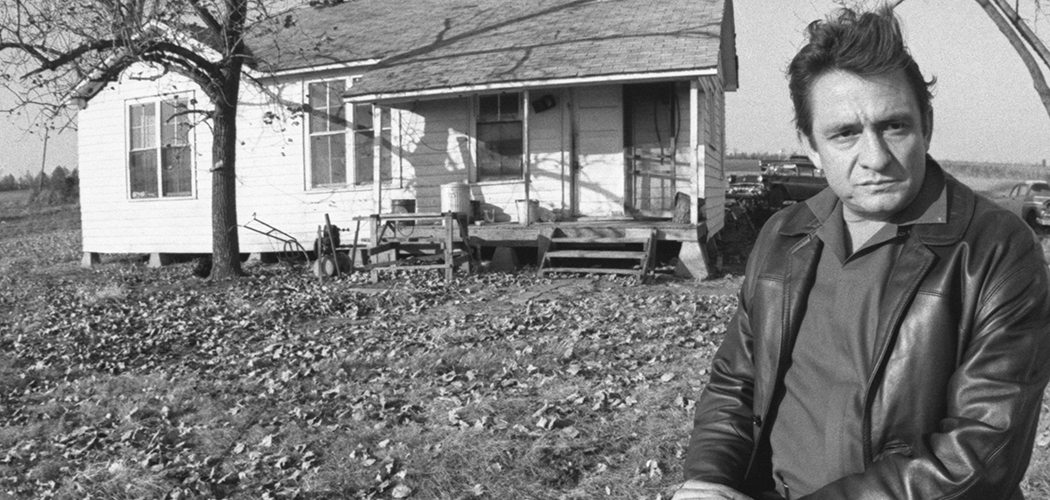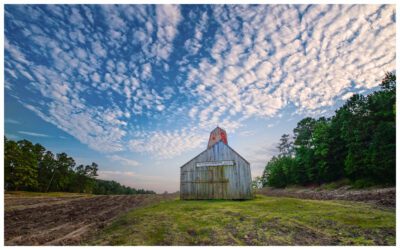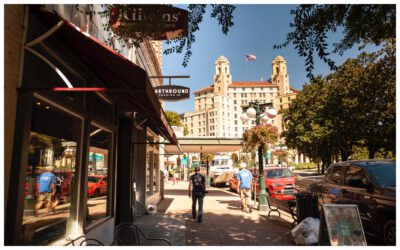[title subtitle=”words: Dwain Hebda
images:LOOK Magazine Photograph Collection,
Library of Congress, and John R. Cash Revocable Trust
All other images, Dwain Hebda and Arkansas State University Heritage Sites”][/title]
It’s a piercing summer day in Mississippi County, Arkansas, hot enough to bleach the azure sky to pale misty blue.
All around, fields of emerald and kelly stretch to the far horizon, the flat landscape unmarred by hills, a vista only occasionally broken by the wayward clump of trees. Driving by at cruising speed, the crushed velvet bean fields stand sturdy in corduroy rows while the wispy rice paddies bend and stretch in the merciless heat of the day.
Larry Sims barely breaks a sweat. Some fifty years ago, times like these were just another day in the life of a farm boy, chopping cotton and wishing he were doing anything but. That’s his boyhood home about a quarter mile yonder, shimmering under the weight of mile-wide bulbous white and silver clouds.
“This is where I walked to school every day, same way Johnny did,” Larry says of the scorching gravel lane that vivisects the cropland in Dyess, Arkansas. That walk took him right past the Cash place and the cotton fields where the family farmed, scraped, picked and prayed for the chance to do it another day. Tourists didn’t come by the busload back then; no sign stood out front as it does now announcing to fans they’d reached the humble true-north for one of the brightest music stars the world had ever known.
“I think if (Johnny Cash) saw how we went back and furnished (his childhood home) just like it was when he was there, I think he would truly appreciate what we did,” says Linda Hinton, acting director of Dyess Colony historical site.
Dyess Colony would be a significant historical spot even if it hadn’t produced a man who would change the face of popular music. One of a dozen relocation projects that dotted the state, the largest, Dyess Colony, was a New Deal initiative, a program started in 1933 under President Franklin D. Roosevelt, that was meant to give poor, displaced farm families a fighting chance against the natural and manmade disasters of the Great Depression, circumstances that left many literally living on the side of the road.
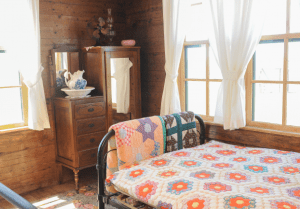 “(Dyess) was vital because it was a major effort during the New Deal,” says Dr. Ruth Hawkins, director of Arkansas State University Heritage Sites. “Farmers had been the victims of several economic setbacks. Certainly, the 1927 flood that wiped out a lot of their crops and then the 1930-31 drought, then the bank failures which meant that it was impossible to get a crop loan. Arkansas was harder hit than most other states. You had people that really were down on their luck and no real place to turn.”
“(Dyess) was vital because it was a major effort during the New Deal,” says Dr. Ruth Hawkins, director of Arkansas State University Heritage Sites. “Farmers had been the victims of several economic setbacks. Certainly, the 1927 flood that wiped out a lot of their crops and then the 1930-31 drought, then the bank failures which meant that it was impossible to get a crop loan. Arkansas was harder hit than most other states. You had people that really were down on their luck and no real place to turn.”
Colonization Project No. 1, as it was known before being renamed for William Reynolds Dyess, the state’s first WPA administrator, was a rural cooperative. At its center was a functioning government-funded settlement that included an administration building, a commissary, high school, hospital and, in time, a raft of other services from a cotton gin to a theater to a newspaper.
From this hub stretched a halo of 16,000 acres subdivided into more than 600 homesteads, of which about 500 were eventually occupied by families who had successfully passed an interview process and who agreed to the terms of their good fortune. Each family drew an advance to buy twenty to forty acres, a new house with outbuildings, a mule, a cow, groceries, supplies and a two-year window to start paying everything off.
The swampy, timbered ground waiting to be drained and cleared wasn’t an easy row to hoe, but to the farmers, this small patch was everything they could want, warts, snakes and all. Although some locals looked upon the resettled families that arrived with disdain, the difficulties of day-to-day life made it hard to view them as getting a free ride.
“It wasn’t a handout, it was a hand up as a lot of them like to say because it certainly wasn’t for free,” Ruth says. “The government did provide a house and land and the expenses to make a crop for the first couple years, with the understanding that once they started making money, they would start paying that back. Farm families would have starved without that.”
Families were also expected to take a shift working various jobs in town to help keep the colony running. Among these was working at the local cannery where women were taught how to preserve garden produce and were paid in the canned foods they learned how to put up. Similar classes were in quilt making and other handicrafts.
In 1936, Ray and Carrie Rivers Cash were admitted to the program, one of five families relocated from Cleveland County. Among the brood was three-year-old J.R. Cash, the fourth of the seven Cash children, who by age five would be working in the fields alongside his parents and siblings.
J.R. graduated Dyess High School in 1950 then took off for the Air Force. He’d never live in Dyess again, but he visited several times, even performing charity shows to benefit his hometown. The singer still brings them in, although many expecting Johnny Cash Land don’t know what awaits them in Dyess, Linda said.
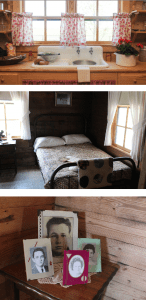 “Well, we do have an advantage having Johnny Cash from here,” she says. “That gets them here. And then, when they learn about Dyess, it’s a double whammy for them because they enjoy learning about history they didn’t know about. It’s not something you read in everyday history books.”
“Well, we do have an advantage having Johnny Cash from here,” she says. “That gets them here. And then, when they learn about Dyess, it’s a double whammy for them because they enjoy learning about history they didn’t know about. It’s not something you read in everyday history books.”
Most of the remaining Cash family had moved away by the 1970s, and the home remained in private hands until 2011. Like the colony buildings, it very nearly disappeared due to neglect and the ravages of time. Not that the ramshackle condition of the house deterred visitors; even as the house crumbled, up to 8,000 fans a year from around the world routinely appeared to pay their respects.
“Tour buses were coming down that gravel road, and the man that lived there would charge people five dollars if they stepped on the yard,” Linda says. “People from Ireland and Germany and everywhere were coming in, taking pictures from the road.”
Arkansas State University acquired the roughly 1,000-square-foot home in 2011 and spent three years restoring it to exacting detail, right down to the placement and species of shade trees in the yard. More recently, ASU acquired the rotting administration building and the theater which had been reduced to the front facade propped up by timbers and reopened these along with a new visitors center in 2016.
Along the way, $3.3 million was spent on restoration, a combination of grants, donations, and proceeds from four annual concerts held in Jonesboro specifically to benefit the site. The success of those events inspired this year’s even more ambitious project, the inaugural three-day Johnny Cash Heritage Festival. Slated for October 19-21, it will feature lectures, music, crafts and a special ticketed concert headlined by Kris Kristofferson to be held on a stage on the gravel road that runs in front of the Cash residence. Also performing will be Roseanne Cash, Joanne and Tommy Cash, and Buddy Jewel.
The home itself is tidy and close inside, and the bare wood walls, floors, and ceiling remind one of a sauna, which is exactly how it must have felt on days like today. Four children slept in one room in two beds; the eldest daughter and parents in the other. The house was equipped with wiring and pipes, but electricity and water wouldn’t reach out this far for a decade after the family moved in. Matriarch Carrie Cash’s original upright piano holds a silent place of honor in one corner.
“One of the great things about the Johnny Cash house is people walk in and when they leave their comments are usually, ‘Oh my gosh. Now we know where his music came from,’” Ruth says. “The other really great thing is that house is not just about Johnny Cash. People walk in and say, ‘Oh, my grandmother had one of those,’ or ‘We had one of those.’ It’s a wonderful way for people to make connections and to remember or learn about how people lived in rural communities during the ‘30s and ‘40s.”
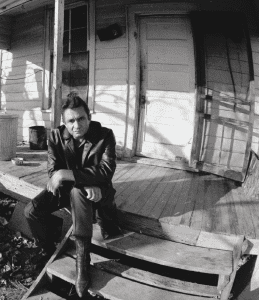 The Cash clan would flee the place when the Tyronza River rushed its banks in January 1937. But unlike many of their neighbors, the family returned, stubbornly, when the waters receded. Johnny would later memorialize the event in “Five Feet High and Rising” and commemorate his childhood in “Pickin’ Time,” “Country Boy,” and “Look at Them Beans.”
The Cash clan would flee the place when the Tyronza River rushed its banks in January 1937. But unlike many of their neighbors, the family returned, stubbornly, when the waters receded. Johnny would later memorialize the event in “Five Feet High and Rising” and commemorate his childhood in “Pickin’ Time,” “Country Boy,” and “Look at Them Beans.”
Beyond these commonly known facts, Larry rattles off other bits of trivia that could only come from the lifelong resident and former Dyess mayor he is. Around one bend lies the area’s best natural pool, “good for swimming, skinny-dipping or baptizing,” he says, “but not all at the same time, of course.”
On another corner, the nondescript clapboard building where the Hollywood people filmed the sawmill scene in Walk the Line for which they stripped the town of any hint of modernity, right down to removing window air conditioners.
“They even took up the striping on the highway here,” he says, a cockeyed grin creasing his face. All that and they still only got the story about half right, he figures.
A few snapshots and handshakes later, it’s time to go. As the unrelenting sun starts to slip in the west, I head toward the highway past a neighbor’s hand-lettered sheet of plywood sporting the strangely Cash-esque line: “Wake up, get ready, Jesus is coming.” In the distance, baritone thunder echoes the unstilled voice of the Delta.
Historic Dyess Colony:
Johnny Cash Boyhood Home
dyesscash.astate.edu
Johnny Cash Heritage Festival
October 19-21
Hear Roseanne Cash, Kris Kristofferson,
Joanne and Tommy Cash, and Buddy Jewel.
johnnycashheritagefestival.com

